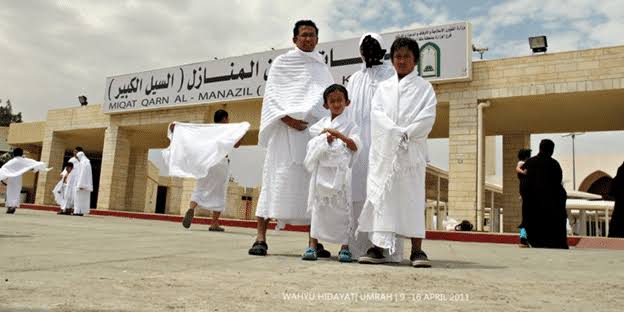For the first time in history, pilgrims performing this year’s Hajj are to pass through just one Miqat (pilgrim station).
Miqat is a term that refers to the boundary from which pilgrims must adorn the Ihram garments, two pieces of white unseamed sheets, in order to perform the annual Hajj or Umrah.
Four boundaries were chosen by the Prophet Muhammad for pilgrims arriving from different areas of the world to perform the Hajj and Umrah rituals, while the fifth was chosen by the second Islamic caliph, Omar bin Al-Khattab.
The five boundaries, or Mawaqeet, represent the first ritual of the Hajj pilgrimage. Located northeast of Makkah, Miqat Qarn Al-Manazel, considered by historians as the Miqat of the people of Najd, is also usually a Miqat for pilgrims traveling from Gulf countries and East Asia today. The term refers to a small mountain that extends to the north and the south with water running on both sides, the reason why it is also known as Al-Sail Al-Kabir (the great flood).
The number of pilgrims performing this year’s annual pilgrimage is low given the exceptional circumstances brought about by the coronavirus disease pandemic. The pilgrims are expected to head to Miqat Qarn Al-Manazel as it is the nearest Miqat to Makkah.
FASTFACT
Located northeast of Makkah, Miqat Qarn Al-Manazel, considered by historians as the Miqat of the people of Najd, is also usually a Miqat for pilgrims traveling from Gulf countries and East Asia today.
Al-Sail Al-Kabir Mosque inside Miqat Qarn Al-Manazel is considered one of the biggest in the Kingdom, equipped with modern services for pilgrims.
Dr. Adnan Al-Sharif, professor of history and civilization at Umm Al-Qura University in Makkah, said of the Miqat: “The place was linked to the Prophet’s life, as the Prophet passed by it during the Siege of Taif. According to several historical novels, the Prophet passed by ‘Qarn’ which means Qarn Al-Manazel.”
Al-Sharif said the Saudi state had taken good care of Miqat Qarn Al-Manazel, and provided it with facilities for pilgrims who visit it to perform Umrah and Hajj.
Throughout history, different meanings were behind the naming of Qarn Al-Manazel, according to journalist and historian Hamad Al-Salimi. It was said that Al-Asmai, a philologist and one of three Arabic grammarians of the Basra school in Iraq, described the Miqat as a mountain in Arafat.
Meanwhile, historians believed that it had also served people coming from other directions throughout history. Al-Ghuri, the 45th sultan of the Mamluk dynasty, said it was the Miqat of the people of Yemen and Taif, while Qadi Ayyad, a famous scholar of Maliki law in the Islamic Golden Age (800-1258) said it was Qarn Al-Thaalib that served as the Miqat of the people of Najd. Some people pronounce it “Qaran”, which is wrong, as Qaran is a tribe in Yemen, according to Al-Salimi.
Source: Arab News



